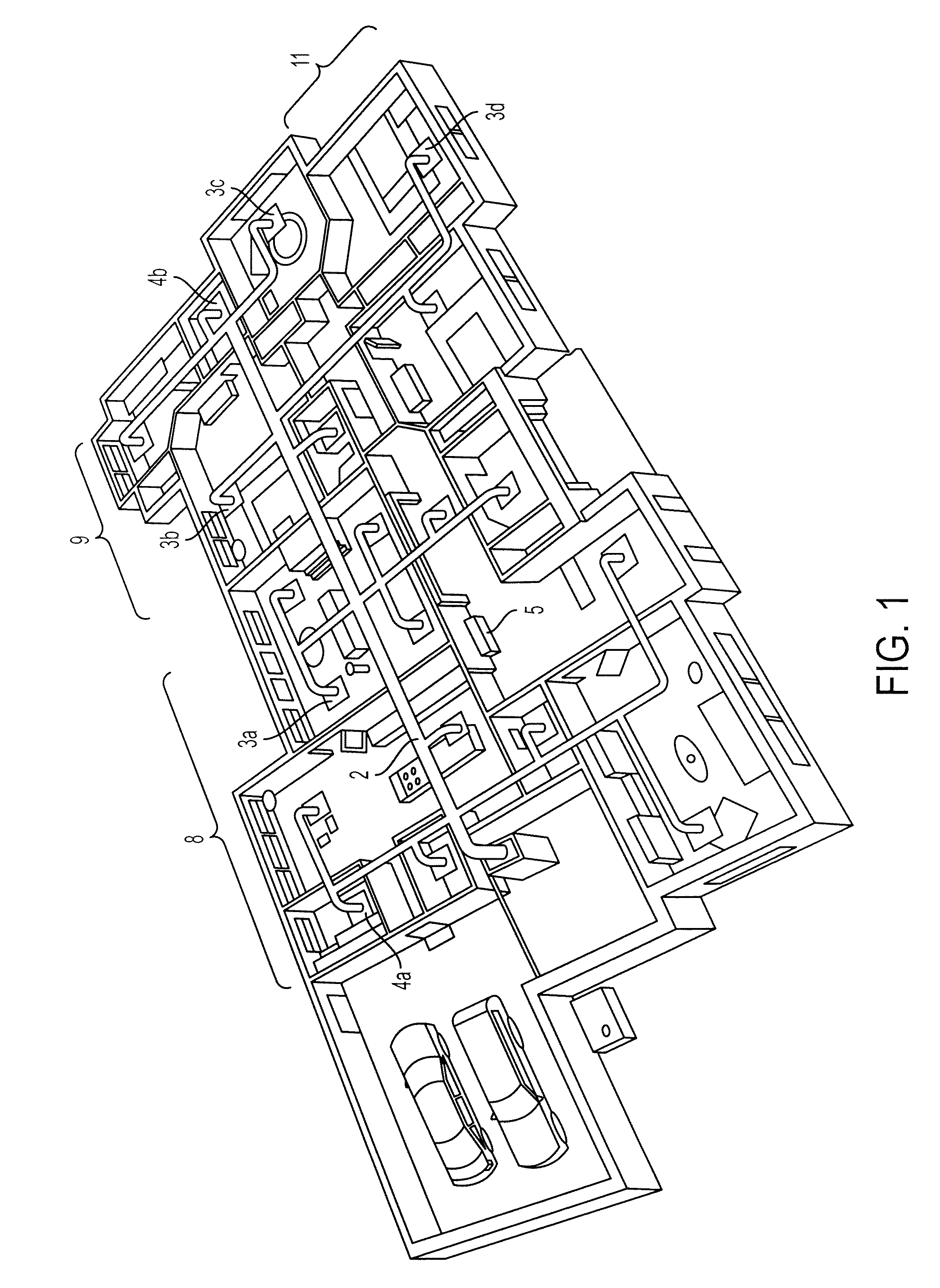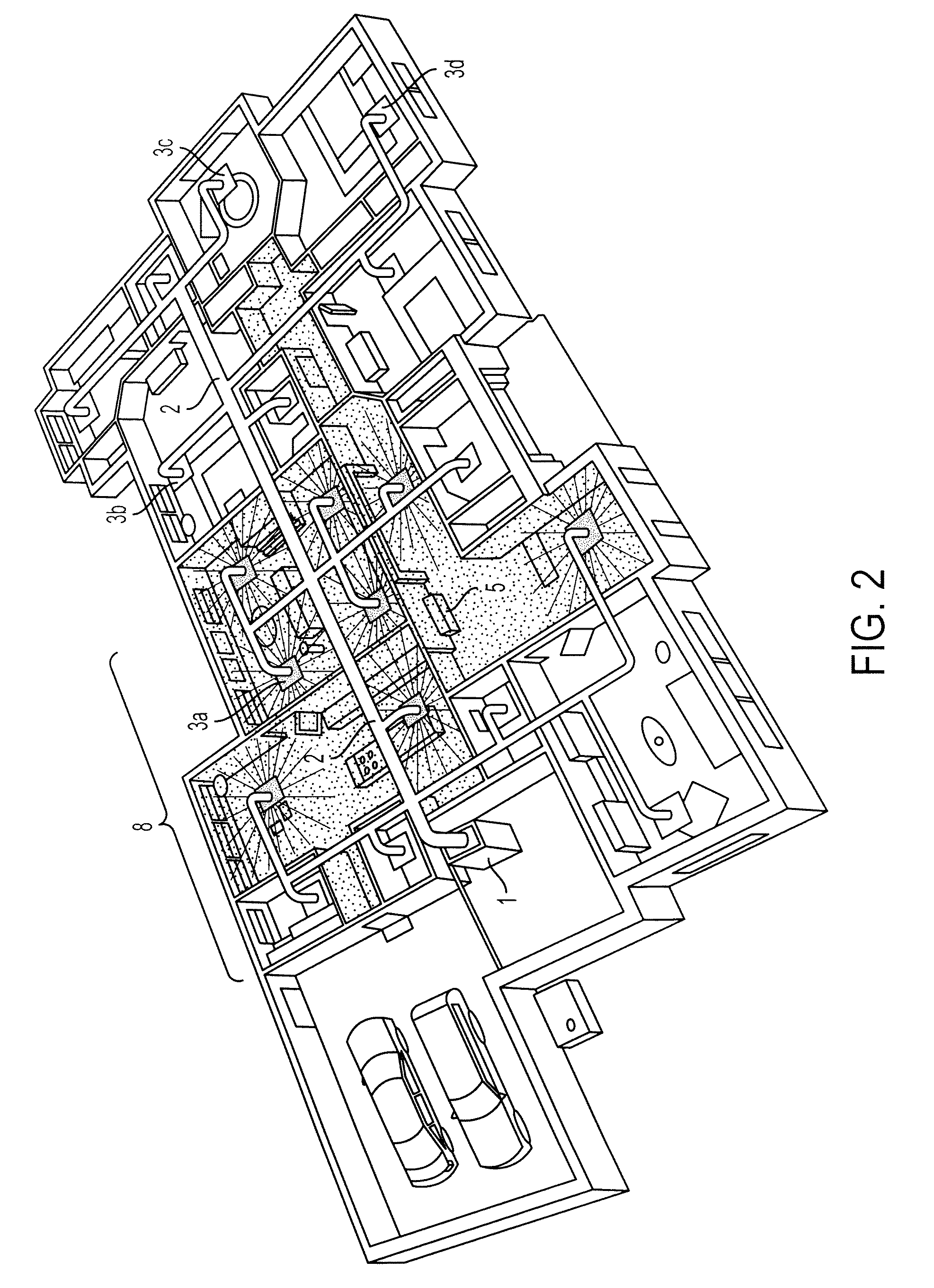Climate zone control
a technology of climate control and zone control, which is applied in the field of heating and cooling, can solve the problems of inability to achieve and maintain a desired and consistent temperature throughout the building, inability to use fossil fuels to create the energy needed by all heating and cooling systems, and overheating or cold rooms closest to air handlers, so as to save the user's money on heating and cooling costs and unnecessary energy consumption
- Summary
- Abstract
- Description
- Claims
- Application Information
AI Technical Summary
Benefits of technology
Problems solved by technology
Method used
Image
Examples
Embodiment Construction
[0031]FIG. 1 is a perspective view of the system in a one story home as shown by way of a floor plan. The air handler 1 is connected to duct work 2 which carries the cooled or heated air to each room. The air enters the rooms by vents 3a, 3b, 3c and 3d. The master thermostat 5 allows a user to select a temperature and other settings of the air handler 1. The system, like all systems, may require discharge zones 4a and 4b to discharge excess air pressure when several vents shut simultaneously. The airflow system allows the home to be divided into separate climate zones 8, 9 and 11. Accordingly, the individuals in the home only use the air needed, when and where it is required.
[0032]FIGS. 2, 3 and 4 demonstrate the airflow system by way of exemplary use of an embodiment of the system. As shown in FIG. 2, the individuals in the home can set the master thermostat 5 in zone 18 at 74°. The master thermostat then communicates to all the vents 3a in zone 18 as to whether the vents should be...
PUM
 Login to View More
Login to View More Abstract
Description
Claims
Application Information
 Login to View More
Login to View More - R&D
- Intellectual Property
- Life Sciences
- Materials
- Tech Scout
- Unparalleled Data Quality
- Higher Quality Content
- 60% Fewer Hallucinations
Browse by: Latest US Patents, China's latest patents, Technical Efficacy Thesaurus, Application Domain, Technology Topic, Popular Technical Reports.
© 2025 PatSnap. All rights reserved.Legal|Privacy policy|Modern Slavery Act Transparency Statement|Sitemap|About US| Contact US: help@patsnap.com



